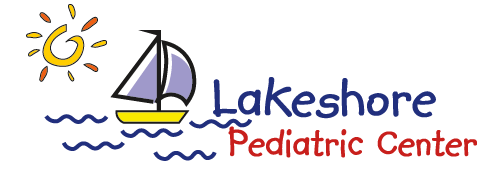ADHD Education and Management
What is attention-deficit/hyperactivity disorder (ADHD)?
Attention-deficit/hyperactivity disorder (ADHD) is the most common mental health problem in children. Children with ADHD often have problems with attention span, hyperactivity, and impulsive behavior. It is often called by an older name, attention deficit disorder (ADD).
The disorder begins in the preschool years and may either continue or fade away during the teenage years. About one-third of children with ADHD also have learning problems such as a reading disability. About half of ADHD children and teenagers have behavior problems, which may include breaking rules, talking back, and hitting other children.
ADHD is 7 times more common in boys than girls. Girls are more likely to have troubles with attention and less likely to have hyperactivity.
How does it occur?
In about 70% of cases, ADHD is inherited. It runs in families, especially through the males in the family line. Research continues in an effort to find out why it occurs in those without a family history. Some things that contribute to the risk for ADHD include:
- substance abuse during pregnancy
- smoking during pregnancy
- various illnesses during pregnancy
- a long and difficult labor
- the baby being short of oxygen during birth
- the umbilical cord being wrapped around the baby’s neck.
Much research has looked at whether ADHD is caused by sugar or things added to foods such as preservatives and coloring. No sound evidence has connected these with ADHD. Allergies are also not a factor in causing ADHD.
People with ADHD have several small differences in their brain structure. These differences are in the front part of the brain (an area involved in self-control) and in some parts in the center of the brain.
What are the symptoms?
The symptoms of ADHD, especially hyperactivity, usually appear by age 2 or 3 and by first grade at the latest. The main symptoms are:
- Trouble focusing and short attention span. Children and teens with ADHD change activities very often, frequently not finishing what they have started. They are also very easily distracted by noises or things they see around them.
- Poor impulse control, or impulsivity (having a hard time with patience and waiting). Children with this symptom often react quickly without thinking of the outcome. They also are impatient and tend to interrupt others in conversations and begin tasks without enough planning.
- Hyperactivity (excessive movement). Hyperactive children are nearly always on the go. They seldom sit still, and even when sitting, they usually fidget or play with things.
Common related symptoms are:
- trouble organizing tasks and projects
- difficulty slowing down at night to get to sleep
- social problems from being aggressive, loud, or impatient in groups and conversations.
How is it diagnosed?
Your health care provider will ask about the symptoms and will observe your child’s behavior for signs of ADHD. To diagnose ADHD, it must be clear that the symptoms persist and interfere in a major way with daily life. You and others, such as your child’s teachers, may be asked to complete questionnaires or rating forms about ADHD symptoms. Your child may be asked to see a psychologist or other mental health professional for tests of attention and self-control.
There are no useful physical tests such as blood tests or brain scans for diagnosing ADHD.
There are 3 forms of ADHD:
- Combined ADHD. Your child has all of the main symptoms: distractibility, poor impulse control, and hyperactivity.
- Predominately inattentive. Your child has problems with focus and attention. This form of ADD is often missed because there may be very little hyperactivity or impulsivity. This form is especially common among girls.
- Predominately impulsive-hyperactive type. Poor self-control is the main problem.
How is it treated?
The treatment of ADHD may involve 3 types of treatment:
- Learning coping skills: Children with ADHD learn to manage highly stimulating situations that distract and over-excite them. They should learn to study in quiet places and to take frequent breaks. In a classroom, they do best at individual desks rather than at a table with others. They also often find that background instrumental music is helpful. Children with ADHD need more structure and daily routine than most people.
- Behavioral training: Simple behavior programs with charts and daily rewards can be good for teaching longer attention spans and sitting still. One form of behavioral training is brain wave, or EEG, biofeedback. In this treatment, a mental health professional trains the child to maintain the brain waves found during sustained attention and calmness. This treatment usually takes 15 to 30 sessions and is best for very motivated children and teens. Behavior changes may not last outside the treatment setting.
- Medicines: Since the 1920s, medicines such as methylphenidate (Ritalin) and dextroamphetamine (Dexedrine) have been used. They are stimulants, and appear to stimulate the self-control areas of the brain. Another medicine often used is dextroamphetamine/amphetamine (Adderall). These medicines do not slow you down, but rather increase self-regulation. About 70% of children with ADHD improve with these medicines. The most common side effects are loss of appetite and trouble getting to sleep. Your child’s dosage will be gradually adjusted to reduce side effects. Sometimes, medicines are used only on school days. When these medicines are not effective, there are other medicines that can help with ADHD.
Treatments that have not been found effective include diets limiting sugar, food additives, or food colorings; and herbal supplements and health foods. Despite much research into this area since the 1970s, little has been found that relates diet to hyperactivity, impulsive behavior, or poor attention.
Although there are claims that many health foods benefit children with ADHD, there are almost no data to back up or refute those claims. Omega fatty acid supplements and certain vitamins and minerals may help symptoms of ADHD.
How long do the effects last?
The symptoms of ADHD almost always last from early childhood until puberty. Between puberty and the young adult years, about half of ADHD sufferers have a major reduction in symptoms. The other half show a slight change or no change in symptoms as they grow into adulthood. Being more patient and better able to sit still are the most common improvements between late childhood and young adulthood.
For more information, contact:
Children and Adults with Attention-Deficit/Hyperactivity Disorder (CHADD)
8181 Professional Place, Suite 150,
Landover, MD 20785
Telephone: (800) 233-4050
Web site: http://www.chadd.org/
Written by Gayle Zieman, PhD, for McKesson Health Solutions LLC.
This content is reviewed periodically and is subject to change as new health information becomes available. The information is intended to inform and educate and is not a replacement for medical evaluation, advice, diagnosis or treatment by a healthcare professional.

